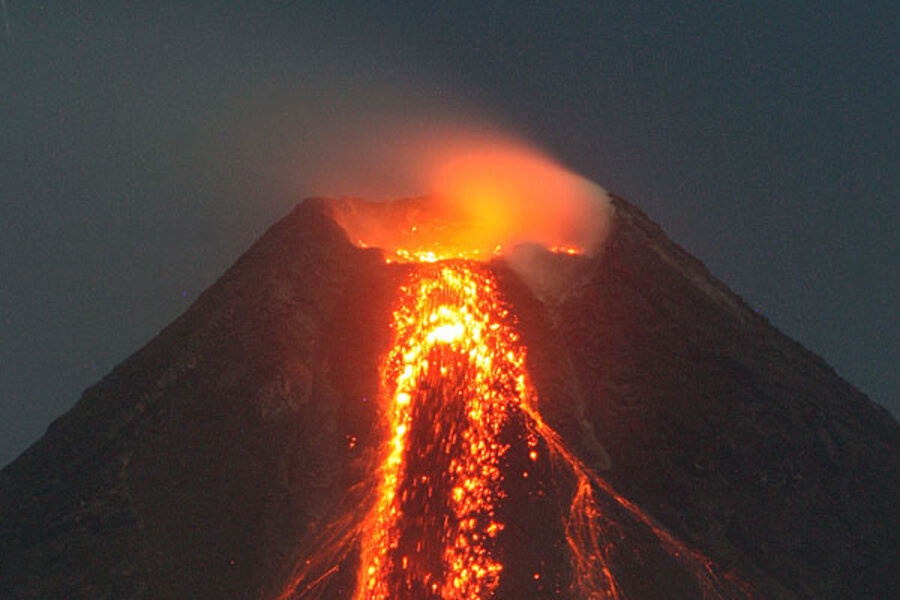How the myth of Atlantis could help predict volcanic eruptions
Loading...
Crystals from a giant eruption linked to the legend of Atlantis may reveal ways to predict future super-volcano eruption, researchers say.
Each of the world's roughly one dozen super-volcanoes is capable of spewing out thousands of times more magma and ash than any eruption ever recorded in human history.
For instance, when Mount Toba on the Indonesian island of Sumatra erupted some 74,000 years ago, a staggering 700 cubic miles (2,800 cubic kilometers) of magma and a thick layer of ash were released over South Asia. In comparison, the explosion of the Indonesian island of Krakatoa in 1883, one of the largest eruptions in recorded history, released about 3 cubic miles (12 cubic km) of material.
"These are catastrophic eruptions," said researcher Tim Druitt, a volcanologist at the University of Blaise Pascal in France, who with his colleagues examined crystals from the Greek island of Santorini to try to learn about the behavior of the magma reservoir beneath a powerful volcano.
Analyzing an ancient eruption
Some super-volcanoes, including the Yellowstone Super-Volcano, are on land, while others lie at the bottom of the sea. Since the long build-up phase leading to the eruption of a super-volcano has never been monitored, the pre-eruption events taking place miles under the Earth's surface are not well understood.
To learn more about how super-volcanoes operate, scientists analyzed crystals from volcanic rocks of Santorini. Although the volcano at Santorini is not a super-volcano – which is loosely defined as one capable of erupting more than 120 cubic miles (500 cubic km) of magma at once – Druitt said, "All these giant eruptions are the same kinds of events, with the same sorts of processes leading up to all of them."
The cataclysmic Santorini eruption of 3,600 years ago, which spewed forth about 9.5 to 14.3 cubic miles (40 to 60 cubic km) of lava, may have inspired the legend of the lost city of Atlantis.
The scientists focused on about 300 crystals of the mineral feldspar. The crystals serve as records of pre-eruption activity under Santorini. The rate at which elements such as magnesium diffuse through such crystals tells researchers the speed of the activity going on in a volcano's magma reservoir.
"What we found was slightly shocking," Druitt told OurAmazingPlanet.
Druitt and his colleagues discovered that large changes in magma composition could occur quite abruptly prior to these large eruptions.
"Before these big eruptions, these explosive volcanoes have long periods of inactivity, of dormancy — they're just stagnant. We found that they can reawaken after thousands of years very quickly, on a time scale of several decades," he said.
This crystal record revealed that the magma reservoir under Santorini recharged within 100 years prior to erupting. Different batches of magma still were mixing during the final months before the eruptions.
Prediction potential
These findings produce hope for detecting changes in magma reservoirs and forecasting potentially devastating eruptions.
"If you're not looking at these volcanoes with the right instruments, you might not detect their reawakening until maybe a few months before the eruptions," Druitt said. "But if you do have the right instruments, and if we can learn to interpret what signals these volcanoes give off, maybe we can get years more warning as to what might happen."
The scientists detailed their findings in the Feb. 2 issue of the journal Nature.





